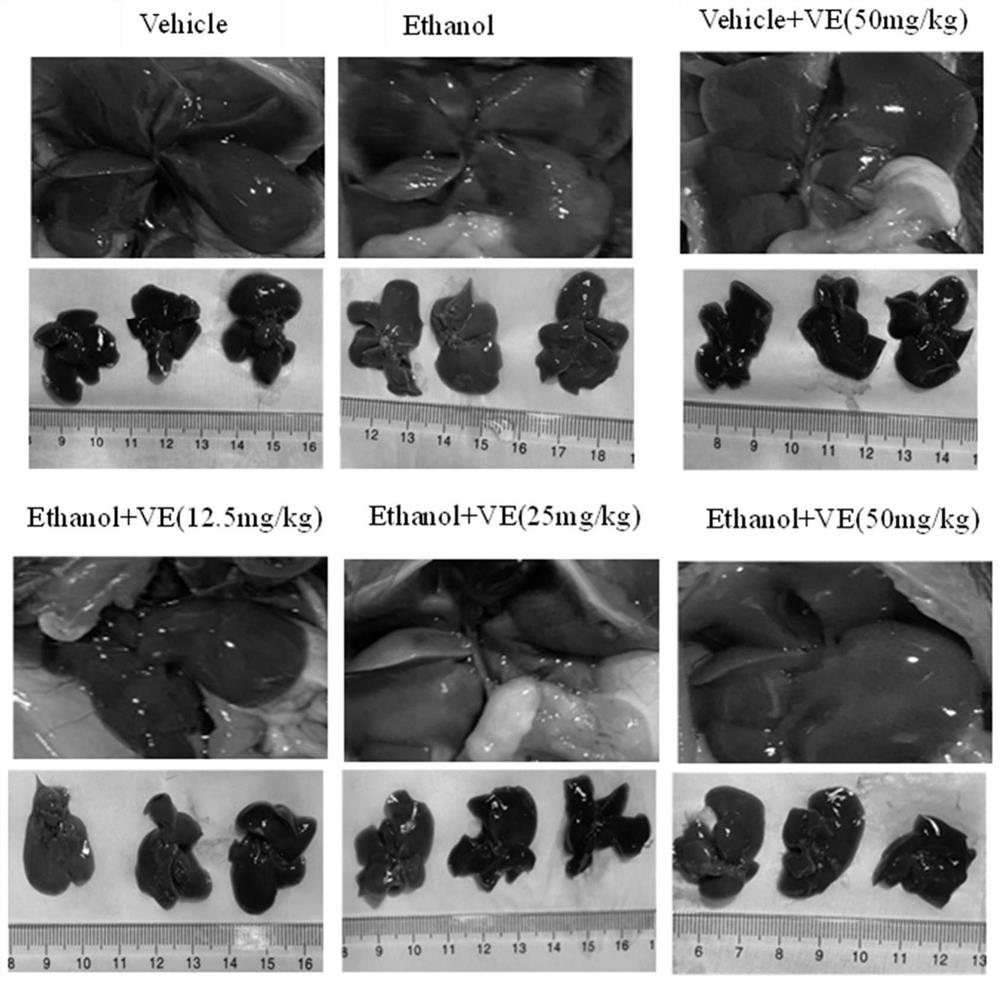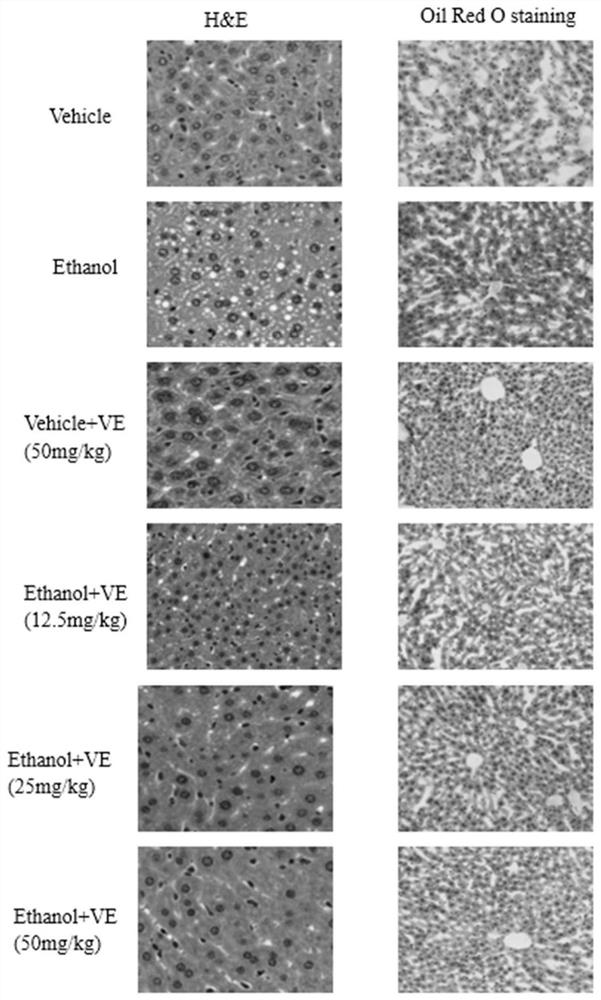Application of verbenin in medicine for treating alcoholic liver injury
A technology of alcohol-induced liver injury and verbenaside, applied in the field of pharmacotherapy, can solve the problem of ALI without any effective treatment measures, and achieve the effects of protecting cerebral ischemia injury, wide pharmacological effects, and promoting sleep.
- Summary
- Abstract
- Description
- Claims
- Application Information
AI Technical Summary
Problems solved by technology
Method used
Image
Examples
Embodiment 1
[0031] Effects of verbenaside on general condition and liver of alcohol-induced mice:
[0032] experimental design:
[0033] 36 male C57BL / 6J mice, weighing 20±2 g, were randomly divided into the following 6 groups (n=6): control group (Vehicle), control + verbenaside (50mg / kg) group, alcohol group, alcohol + The verbenaside (12.5mg / kg) group, the alcohol + verbenin (25mg / kg) group and the alcohol + verbenin (50mg / kg) group.
[0034] A mouse model of ALI (Alcohol-induced liver injury) was established by chronic long-term alcohol intake: after one week of adaptive feeding, the mice were randomly divided into 6 groups, 6 mice in each group, and the control group ( Vehicle), control + verbenin (50mg / kg) group, alcohol group, alcohol + verbenin (12.5mg / kg) group, alcohol + verbenin (25mg / kg) group and alcohol + verbenin (50mg / kg) / kg) group. Two mice per cage were used to establish a mouse model of alcoholic liver injury.
[0035] Mice in all groups were adaptively fed with co...
Embodiment 2
[0041] Effects of verbenaside on alcohol-induced liver pathology in mice
[0042] The liver tissue of each group of mice in Example 1 was fixed in a formalin solution for 24 h to 48 h, and the samples were dehydrated in alcohol and transparent in xylene, and then embedded in paraffin. The embedded tissue blocks were hardened and sliced with a microtome. Before staining, the paraffin in the paraffin section was removed in xylene, dehydrated with ethanol from high concentration to low concentration, and finally rinsed with clean water (distilled water) to start staining. Stain in hematoxylin staining solution for 5min-15min, and wash off excess staining solution with running water. In 1% hydrochloric acid ethanol for 1 ~ 3s, after a little washing, add blue solution (0.5% light ammonia) to return to blue for 10 ~ 30s, then dye with 0.5% eosin for about 1 ~ 3min. After a little washing with distilled water, dehydration is carried out in a low-concentration to high-concentrati...
Embodiment 3
[0045] Effects of verbenaside on alcohol-induced serum ALT and AST in mice
[0046]Obtain the mouse blood serum obtained in Example 1 as a sample, and operate according to the instructions of the alanine aminotransferase (ALT) kit and aspartate aminotransferase (AST) kit (microwell 96T microplate method) (Nanjing Jiancheng Bioengineering Institute).
[0047] Detection of serum ALT and AST results such as Figure 3A , Figure 3B shown. Compared with alcohol-induced ALI mice, verbenaside (12.5, 25, 50 mg / kg) could significantly reduce serum ALT and AST levels (p < 0.01) (Figure 3), suggesting that verbenaside has protection against alcohol-induced ALI effect.
PUM
 Login to View More
Login to View More Abstract
Description
Claims
Application Information
 Login to View More
Login to View More - Generate Ideas
- Intellectual Property
- Life Sciences
- Materials
- Tech Scout
- Unparalleled Data Quality
- Higher Quality Content
- 60% Fewer Hallucinations
Browse by: Latest US Patents, China's latest patents, Technical Efficacy Thesaurus, Application Domain, Technology Topic, Popular Technical Reports.
© 2025 PatSnap. All rights reserved.Legal|Privacy policy|Modern Slavery Act Transparency Statement|Sitemap|About US| Contact US: help@patsnap.com



